Do you have a question about the TP-Link EAP225 and is the answer not in the manual?
Indicates the device is operating properly and functioning as expected.
Signifies system errors, potentially related to RAM, Flash, Ethernet, or firmware.
Indicates firmware update in progress; do not disconnect or power off.
The device is being reset to its factory default settings.
Press and hold for 8 seconds to restore the device to factory default settings.
Connects to a router/switch for data transmission or a PoE device for data and power.
Connects to the provided power adapter for device power supply.
Illustrates a standard network connection including Internet, Router, Switch, Management Host, and EAPs.
A DHCP server is required to assign IP addresses to EAPs and clients in the local network.
Connect an Ethernet cable from the PoE switch to the ETHERNET port for power and data.
Connect the provided adapter to the EAP's POWER port and a wall outlet.
Download and install the EAP Controller from the product support page.
Launch the controller, create a wireless network, and log in with admin credentials.
Adopt EAP devices within the Controller interface to change their status to Connected.
Instructions for mounting the EAP onto a ceiling T-rail using clips and screws.
Steps for installing the EAP onto a ceiling tile using screws, washers, and wing nuts.
Guide for affixing the EAP to a wall using anchors and self-tapping screws.
Indicates the device is operating properly and functioning as expected.
Signifies system errors, potentially related to RAM, Flash, Ethernet, or firmware.
Indicates firmware update in progress; do not disconnect or power off.
The device is being reset to its factory default settings.
Press and hold for 8 seconds to restore the device to factory default settings.
Connects to a router/switch for data transmission or a PoE device for data and power.
Connects to the provided power adapter for device power supply.
Illustrates a standard network connection including Internet, Router, Switch, Management Host, and EAPs.
A DHCP server is required to assign IP addresses to EAPs and clients in the local network.
Connect an Ethernet cable from the PoE switch to the ETHERNET port for power and data.
Connect the provided adapter to the EAP's POWER port and a wall outlet.
Download and install the EAP Controller from the product support page.
Launch the controller, create a wireless network, and log in with admin credentials.
Adopt EAP devices within the Controller interface to change their status to Connected.
Instructions for mounting the EAP onto a ceiling T-rail using clips and screws.
Steps for installing the EAP onto a ceiling tile using screws, washers, and wing nuts.
Guide for affixing the EAP to a wall using anchors and self-tapping screws.
| Frequency | 2.4 GHz and 5 GHz |
|---|---|
| Antenna Type | Internal Omni |
| Antenna Gain | 2.4 GHz: 3 dBi; 5 GHz: 4 dBi |
| Operating Humidity | 10% to 90% non-condensing |
| Certifications | CE, FCC, RoHS |
| Wireless Standards | IEEE 802.11ac/n/g/b/a |
| Data Rate | Up to 300 Mbps at 2.4 GHz, Up to 867 Mbps at 5 GHz |
| Ethernet Ports | 1 x Gigabit Ethernet |
| PoE | 802.3af PoE |
| Power Supply | PoE or 12V/1A DC power adapter (not included) |
| Mounting | Ceiling / Wall Mounting |
| Security | WPA, WPA2, WPA-PSK / WPA2-PSK |
| Dimensions | 180 x 180 x 47.5 mm |
| Operating Temperature | 0°C to 40°C (32°F to 104°F) |
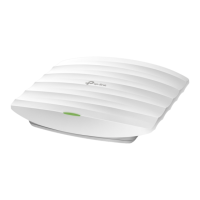
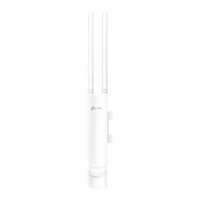

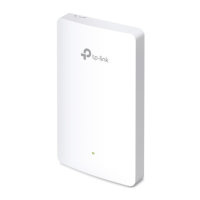

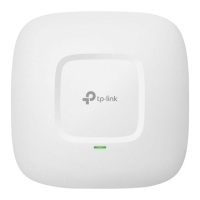
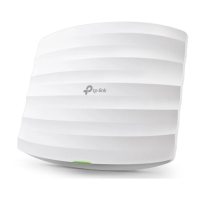
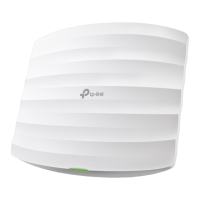


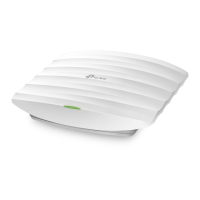

